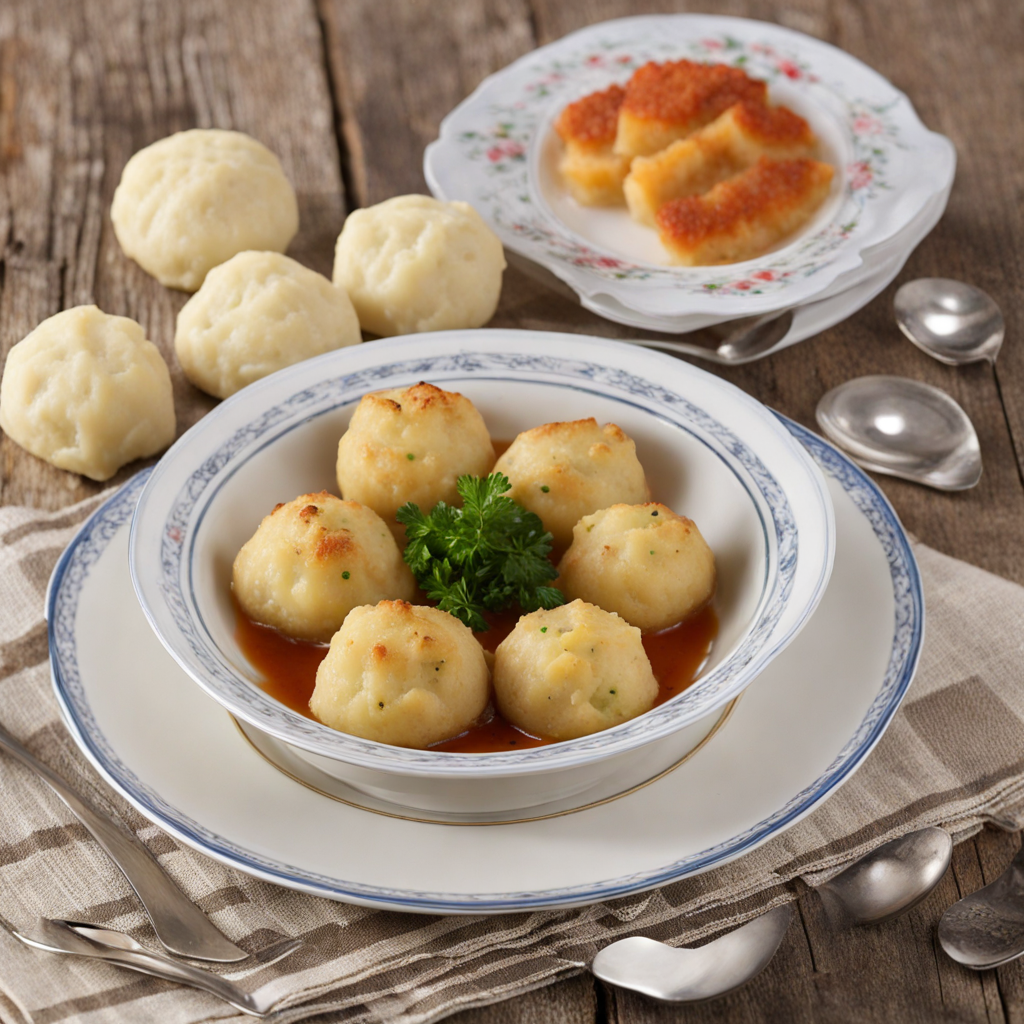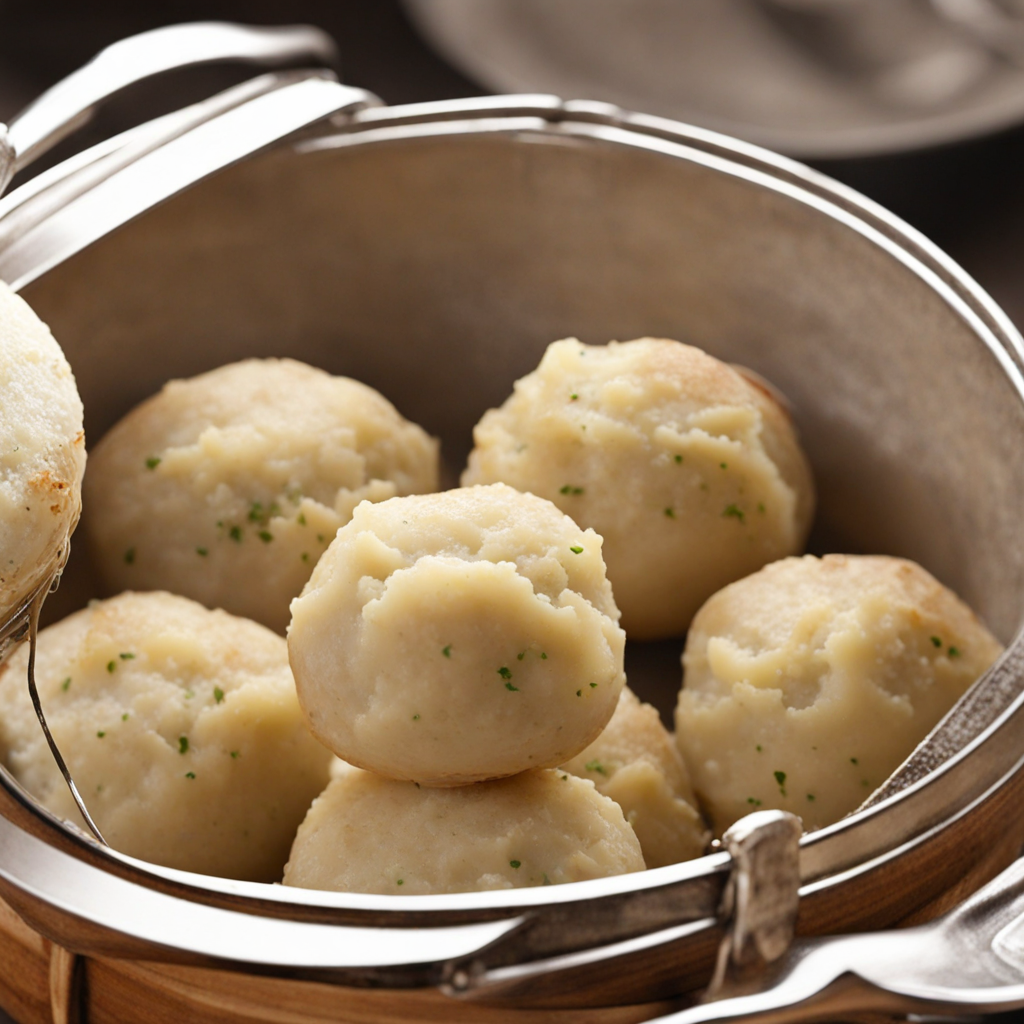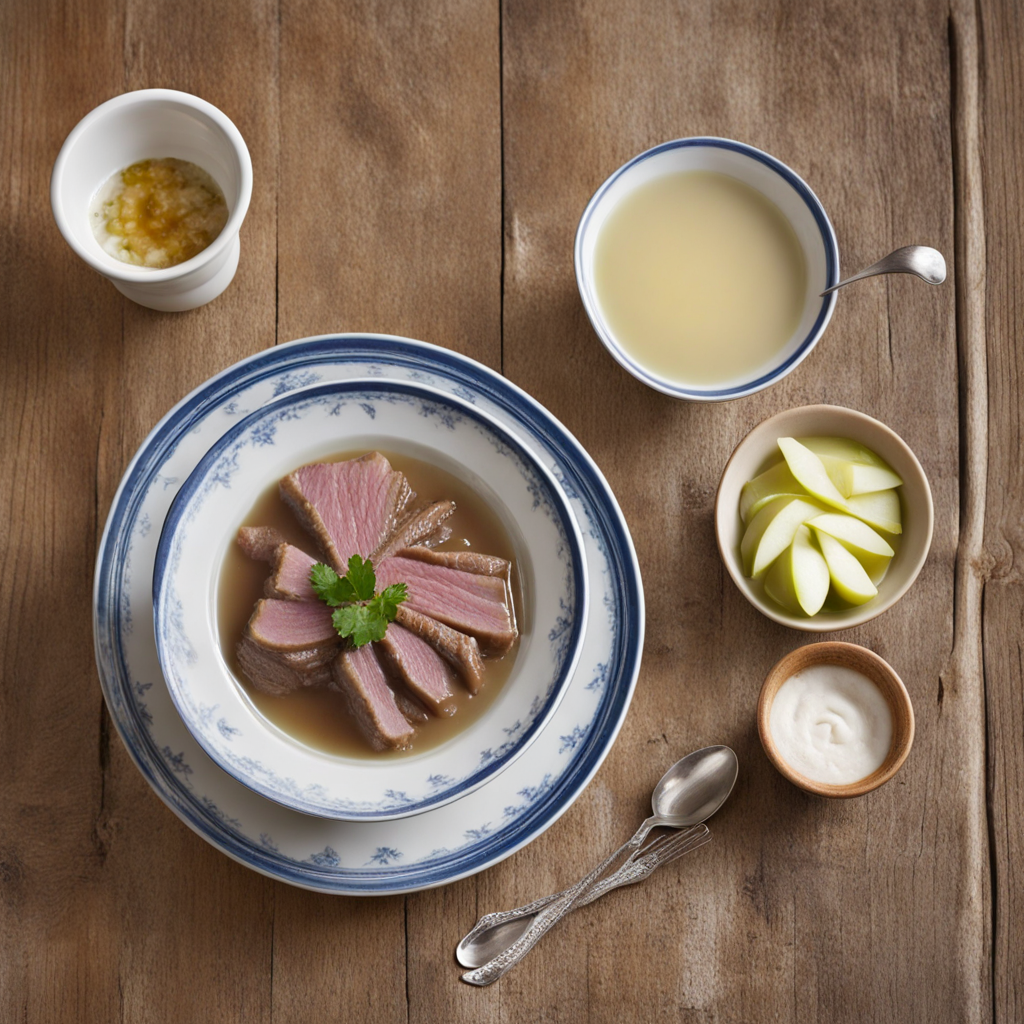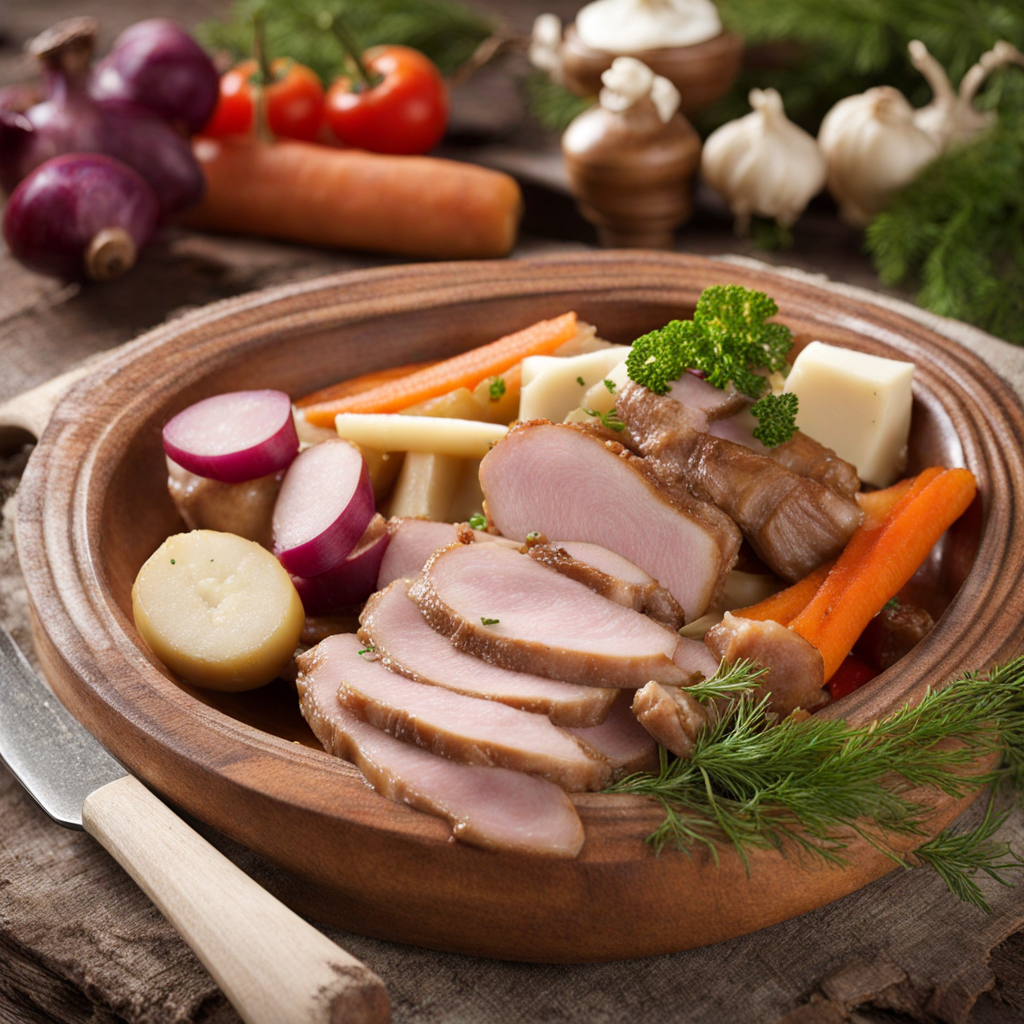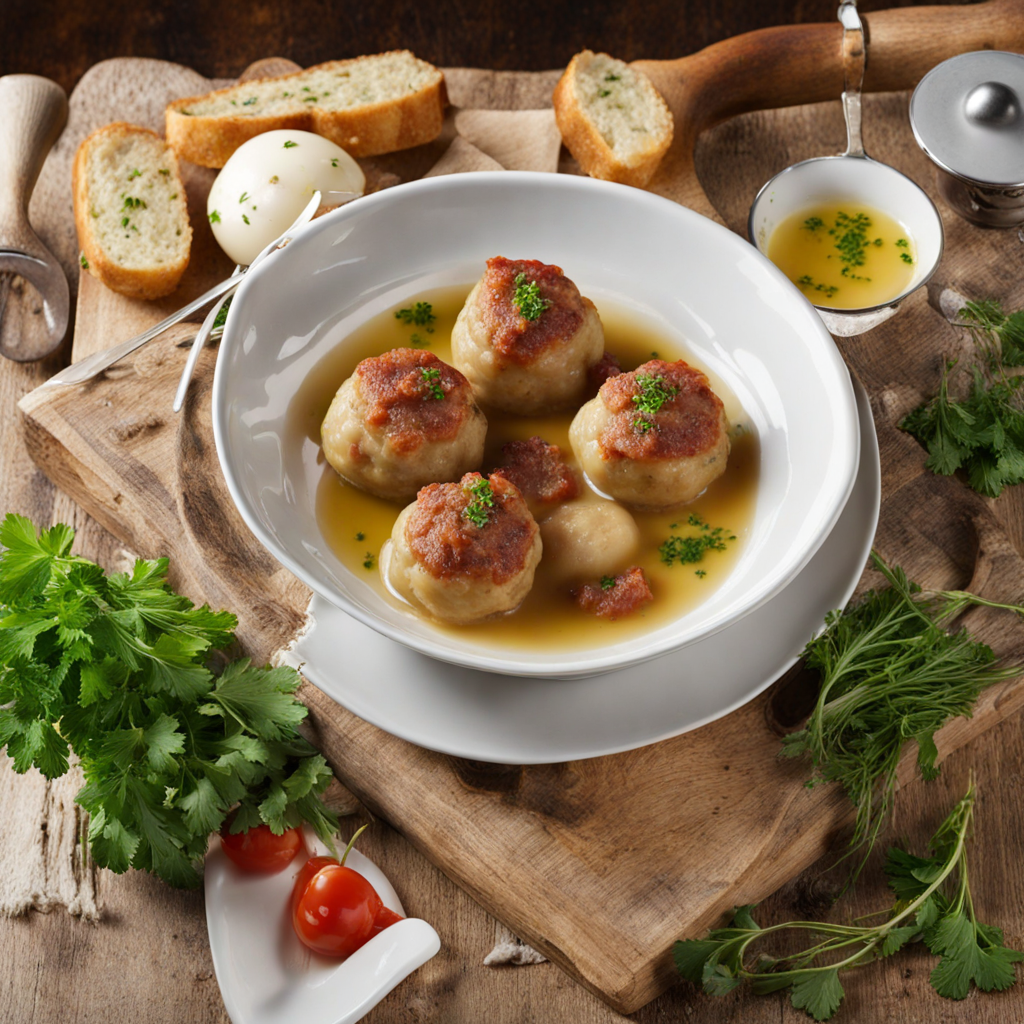Knödel
Knödel, a traditional Austrian dish, is a type of dumpling that embodies the rustic charm of Central European cuisine. These delightful morsels can be made from various ingredients, most commonly potatoes or bread, mixed with flour and eggs to create a dough that is both hearty and satisfying. The versatility of Knödel is one of its most appealing aspects; they can be served as a side dish to accompany rich gravies and sauces, or enjoyed on their own with a drizzle of melted butter or a sprinkle of herbs. The texture is typically soft and pillowy, making each bite a comforting indulgence. The flavor profile of Knödel can be further enhanced by the inclusion of different fillings. Savory versions often contain ingredients like spinach, cheese, or meat, adding an extra layer of depth to the taste. Sweet versions, which might incorporate fruit such as apricots or plums, are also popular and provide a delightful contrast to the more common savory preparations. Knödel can be enjoyed as a main dish or a side, and they pair beautifully with traditional Austrian dishes like goulash or roast meats, making them a staple at family gatherings and festive occasions. Beyond their delicious flavors, Knödel carries a sense of tradition and heritage, often passed down through generations. The preparation of these dumplings is an art form in itself; many families have their own cherished recipes that they hold dear. Whether you’re savoring them at a cozy Austrian restaurant or trying your hand at making them from scratch at home, Knödel offers a warm, comforting taste of Austria that invites you to explore the rich culinary history of the region.
How It Became This Dish
The History of Knödel: Austria's Beloved Dumpling Knödel, the quintessential dumpling of Austrian cuisine, embodies a rich tapestry of cultural history and culinary tradition. This beloved dish is more than just a staple on the Austrian dinner table; it symbolizes the country's agricultural roots, regional diversity, and the evolution of food in a world shaped by both local customs and outside influences. #### Origins: Roots in Tradition The origins of knödel can be traced back to the rustic kitchens of Central Europe, particularly in the regions that now comprise Austria, Germany, and the Czech Republic. The word "Knödel" comes from the Old High German "knodala," which means "a small ball." While the exact timeline of knödel's inception is difficult to pinpoint, it is believed that the practice of making dumplings from bread and flour dates back to the Middle Ages. Initially, dumplings were created as a way to utilize leftover bread — a staple food that was often in abundance yet could easily go stale. The early forms of knödel likely consisted of simple ingredients such as stale bread, flour, and water, combined to create a dough that could then be boiled or steamed. Over time, regional variations emerged,with each locality adding its unique touch based on available ingredients and cultural preferences. #### Cultural Significance: More Than Just Food Knödel holds a significant place in Austrian culture, serving as a symbol of comfort and sustenance. In many Austrian households, knödel is often associated with family gatherings and festive occasions. It is a dish that is both rustic and refined, capable of complementing a simple stew or gracing a banquet table. The importance of knödel extends beyond mere sustenance; it also signifies hospitality and warmth. In Austria, it is common for families to come together to prepare knödel, transforming the cooking process into a communal activity that strengthens familial bonds. This tradition reflects the broader European value of gathering around food, fostering connection and celebration. #### Development Over Time: From Simple Dumplings to Culinary Delights As Austria evolved through the centuries, so too did knödel. By the 18th and 19th centuries, during the Austro-Hungarian Empire, the culinary landscape began to shift dramatically. The empire's vast reach introduced a variety of ingredients and cooking techniques from its diverse regions. This cultural exchange enriched the knödel, leading to the emergence of numerous variations. Types of Knödel: A Culinary Cornucopia 1. Semmelknödel: One of the most iconic forms of knödel, semmelknödel is made primarily from stale bread rolls (semmel), milk, eggs, and flour. This version is often served alongside hearty dishes such as goulash or roast pork, soaking up the rich sauces, making every bite a delightful experience. 2. Kartoffelknödel: Potato dumplings are another popular variant, made from mashed or grated potatoes. These knödel are known for their light, fluffy texture and are often served with rich gravies or as a side to roasted meats. In some regions, they might be stuffed with breadcrumbs or fried onions, adding layers of flavor. 3. Speckknödel: In Tyrol, a mountainous region of Austria, speckknödel combines the heartiness of bread with the savory richness of speck (cured pork). These dumplings are a testament to the local practice of utilizing available meats and are often featured in traditional mountain cuisine. 4. Obatzda Knödel: This less common, but equally delicious variant, incorporates the famous Bavarian cheese spread, Obatzda, into the dumpling mixture, offering a unique twist that caters to cheese lovers. The versatility of knödel has allowed it to adapt to changing tastes and dietary preferences. Modern interpretations may incorporate ingredients like spinach, pumpkin, or even gluten-free alternatives. The culinary creativity surrounding knödel continues to flourish, ensuring that this traditional dish remains relevant in contemporary kitchens. #### Knödel in Modern Austrian Cuisine Today, knödel is celebrated not only in homes but also in restaurants and food festivals across Austria. Chefs are experimenting with new flavors and presentations, reimagining knödel in innovative ways while still respecting its traditional roots. Food enthusiasts might find knödel served in gourmet settings, paired with sophisticated sauces, or incorporated into avant-garde dishes. Moreover, the rise of the “farm-to-table” movement has rejuvenated interest in traditional Austrian ingredients, further cementing knödel's place in modern gastronomy. Local ingredients, sustainability, and seasonal cooking enhance the dish's appeal, allowing it to maintain its cultural significance while evolving to meet contemporary tastes. #### Knödel in the Global Context While knödel is distinctly Austrian, its influence can be seen across various cultures. Similar dumpling variations exist in many countries, from Italy's gnocchi and Poland's pierogi to China's baozi. This global phenomenon highlights the universal appeal of dumplings as a comforting, versatile food that transcends borders. In recent years, the migration of Austrians and their culinary traditions has brought knödel to international audiences. Austrian restaurants and food festivals in cities around the world now showcase knödel, introducing this iconic dish to new generations and palates. #### Conclusion: A Dumpling Like No Other In summary, knödel is much more than a simple dumpling; it is a reflection of Austria's rich history, cultural diversity, and the adaptability of its cuisine. From its humble beginnings as a means of using leftover bread to its status as a beloved comfort food, knödel represents the heart of Austrian culinary tradition. As we savor this delightful dish, we not only taste a connection to the past but also embrace its continued evolution in a modern context. Knödel remains an essential part of Austrian culture, embodying the spirit of togetherness, tradition, and gastronomic creativity. Whether enjoyed in a rustic tavern or a contemporary restaurant, knödel invites us to partake in a delicious history that continues to unfold with every bite.
You may like
Discover local flavors from Austria


